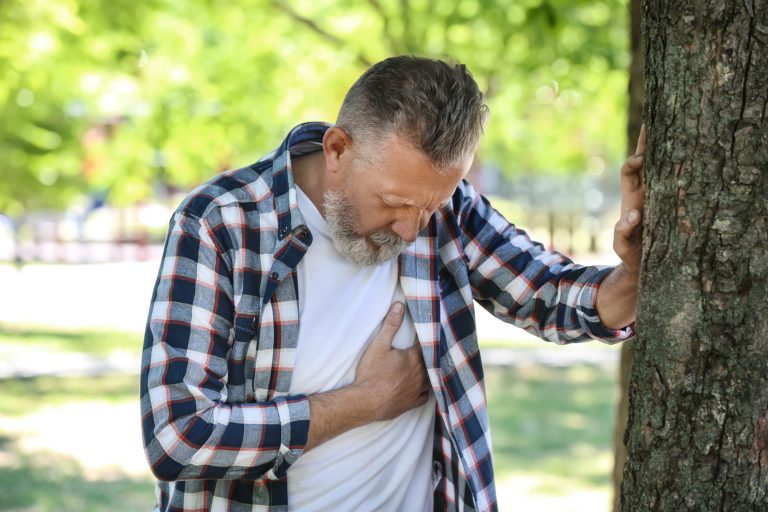How to Safely Check for Roof Damage After a Storm
Estimates of property damage from the hurricane are anticipated to climb from around $18.5 billion in 2023.
Hurricanes, tornadoes, and other windstorms can cause extensive roofing damage, leading to potential structural problems inside your home. The first step in mitigating this damage is to check for signs of roof damage.
The roof of a home provides a lot of protection, including blocking wind and rain and deflecting and absorbing sunlight. To keep your roof in good shape, it should be relatively easy to repair damaged components. You might even be able to prevent damage if you get up there before the next storm rolls in.
There are certain signs of a damaged roof that you should keep an eye out for after a storm. If you continue to live in a house with poor conditions, your family will be at risk.
Here’s how to check for roof damage and what to do next.
Create a Detailed Plan of Action Before You Begin
Before an individual begins checking for roof damage, they should create a comprehensive plan of action to ensure their safety. If a person has experience working on ladders or in elevated areas, a basic plan can be crafted with the necessary tools and materials needed. The tools and materials should include a ladder, the proper protective gear, and a two-way radio for communication.
You should also wear non-slip shoes and gloves. As the person is up on the roof, they should use caution around fragile areas, as well as be aware of potential slippery spots.
Inspect Visually From the Ground
First, inspect the roof from a distance and use binoculars or a telescope if the roof is too high for an unaided view. Take note of any missing shingles, obvious wear, discoloration, and damage to the roof edge. If possible, use a ladder to safely climb up to an upper level and get a better view of the roof.
Watch for any signs of gaps or separations around the surface of your roof and the walls of your home. Ensure to mark where storm damage has been detected and re-inspect the roof when necessary, weather conditions permitting. If any of these signs of damage are visible, you should contact a professional to inspect your roof further.
Check Out the Shingles Up Close
Before walking on the roof, inspect it once more from the ladder. When you’re on the roof, carefully check the shingles. Look for things like raised edges, loose nail heads, or cracked or broken tiles. Check around pipes, vents, and other obstacles to make sure that all of the edgings are secure.
Inspect the flashing, roof valleys, and roof ridge for any signs of damage, missing shingles, rust, or other storm roof damage. Make sure to note any damage you find according to its size and location. Pay attention to any risk areas so that you can repair them before any lasting damage.
Investigate the Gutters & Downspouts
See if the downspouts direct rainwater away from the foundation and that the gutters are free of debris and not rusted or detached. Look for cracked fasteners or seams in the gutters as well.
To inspect the roof and gutters, use binoculars to spot any problems to keep them at a safe distance. When finished, secure any loose items that may have been disturbed, such as shingles, nails, or pieces of insulation.
Donning Protective Gear
A hard hat with a built-in light will ensure that the head is safely protected from falling objects and prevent slips due to a lack of vision. Wear protective eyewear to shield your eyes from dust, dirt, and other debris. It’s also important to wear long sleeves and pants to avoid scratches and sunburns.
While on the damaged roof, one should take cautious steps to avoid slipping on wet or mossy surfaces and use a ladder that’s stable and securely placed on the ground at all times. By taking the necessary safety precautions and properly inspecting the roof, homeowners can make sure their roofs remain safe and secure.
Identify Hidden Roof Hazards
First, identify the roof lines and attic access in case necessary. Then, secure the structure by looking for any signs of damage. This includes broken or weakly attached shingles, retracted nails, and large pieces of missing shingles.
After that, inspect the roof deck, paying close attention to any changes in coloring or warping. Lastly, take the time to look for any potential hidden hazards that may not be immediately visible. These hazards could be in the form of leaks, pest infestations, or structural issues.
Understanding Warning Signals
First, beware of any strong and musty smells inside your home, preferably after a rainstorm. This could indicate mold, mildew, and water damage.
Second, look out for any sagging or drooping in the ceiling or any discoloration around corners and near windows. Third, be on the lookout for curled shingles, broken shingles, and leaks around the chimney. After thoroughly examining both the interior and exterior of your home, gather professional advice and a team of experts to help you diagnose, evaluate, and repair your home’s roof.
Consulting an Expert for Serious Damage
If the visual inspection reveals more serious signs of damage, then it is best to hire an expert for a more thorough inspection. A certified roofing contractor can accurately assess the severity of the damage and provide the necessary solution for a safe, long-lasting roof.
Furthermore, an expert can easily spot where any repair work needs to be done and will advise on the best materials to use to prevent the problem from recurring. Consider the Roofing Force Company if you need a roof repair. They offer the best strategies to make your roof durable in the long run.
Safely Check Roof Damage From Storms
After a storm, keeping an eye on your roof for damage can ensure that your home remains safe and secure. Take the time to regularly assess for wear and tear, inspect after bad weather and look for signs of roof damage. Get proactive and diminish any potential issues as soon as possible, ensuring a long and safe life for your roof.
If you find this article beneficial, read our other informative blogs on this site today!






